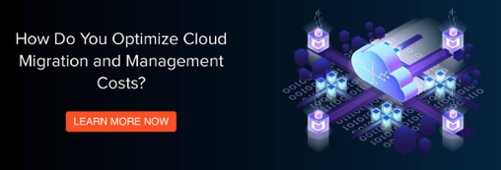Cloud computing has taken major strides in the past few years and continues to advance in capabilities and speed. Cloud computing is an instrumental tool in data storage and processing for the modern company, enabling greater agility than ever before. As we break into 2022, innovations in the cloud continue to drive business growth and digitization. For those looking to stay competitive in a tech-driven world, these are the next significant trends in cloud computing to keep an eye out for.
1. Industry Cloud
An industry cloud is a customized cloud solution specifically tailored to the needs of a business industry. Industry clouds are particularly beneficial for sectors with specific obligations and restrictions, such as healthcare or financial services. While industry clouds are primarily associated with public cloud deployments, they may be configured to hybrid cloud environments to accommodate organizations using on-premises and cloud resources.
Major public cloud service providers deliver this form of cloud computing, including computing resources, APIs, data models, tools, and workflows designed to meet industry-specific requirements.
The traditional cloud utilizes horizontal alignment to deliver a consistent set of services to organizations regardless of their industry. In contrast, the industry cloud is defined by its vertical alignment, providing specific services to organizations within one sector.
This is highly beneficial in satisfying strict requirements, such as HIPAA in the healthcare industry. As regulations and requirements are so specific in certain industries, the industry cloud is instrumental in achieving compliance and uniformity.
While the concept of an industry cloud may seem like an entirely new concept, it is made using preexisting cloud technology. Aside from its vertical alignment, the primary difference between an industry cloud and a general-purpose cloud is its optimization for a specific industry.
A general-purpose cloud may result in heightened risks for highly regulated industries, whereas the industry cloud eliminates these risks while improving performance. The industry cloud can easily collect and analyze industry-specific data to align it with its more applicable regulations and practices, ensuring compliance. As it is industry-specific, organizations can also receive more accurate and relevant consumer insights.
2. Hybrid Cloud
The hybrid cloud is another trend in cloud computing that will continue to grow in the next few years. This cloud model consists of mixed computing, storage, and service environments of on-premises, public, and private clouds. This model combines the three traditional cloud models, enabling advanced data sharing between models.
As a result of the hybrid cloud’s enhanced flexibility and interoperability, users can quickly and easily move workloads between cloud models as needed. This means that organizations can choose their optimal cloud computing environment for each individual task and workload to later transfer data between models.
The hybrid cloud is created by transforming portions of a company’s on-premises data center into a private cloud infrastructure. Next, the private cloud is connected to a public cloud environment hosted off-premises by a third-party provider. Once completed, users are equipped with a highly capable hybrid cloud environment, enabling movement between all three traditional cloud models.
The primary benefits of a hybrid cloud include flexible data storage and use, enhanced data security, optimized automation capabilities, increased scalability with improved time and cost-efficiency. As a result, organizations can achieve technical and business objectives faster and at less cost than with an individual public or private cloud.
3. Serverless Cloud
Serverless clouds are relatively new but expected to gain significant traction in upcoming years. Occasionally referred to as functions-as-a-service, the serverless cloud allows organizations to utilize their cloud environment without leasing servers or paying for fixed amounts of storage and bandwidth. That being said, the servers are still an aspect of the model, but users do not need to get involved with the traditional configuration and technicalities of the serve.
With incredible scalability, this model functions as a true pay-as-you-go-service, offering organizations a cost-efficient means of cloud computing. Companies can entirely scale their cloud services up and down with their needs, allowing them to save significantly without skimping on storage or data computation capabilities. As such, it is expected that serverless clouds will grow in popularity in 2022, allowing the entire tech landscape of the cloud to improve accessibility.
4. AI-Enabled Cloud Computing
Just as cloud computing is a significant component of modern businesses, so is artificial intelligence (AI). Cloud computing is a significant enabler of the use and deliverance of AI services, delivering highly intelligent insights and automation to users. The processing power and data bandwidth required for machine learning (ML) and AI are astronomical but made possible by cloud data centers.
As cloud computing grows faster and more advanced, so will our capabilities in AI processing. Cloud computing will continue to play a key role in the delivery of AI services such as creative algorithms, creating art, synthetic data, language modeling, and more. In the future, we can expect to see significantly faster and more insightful AI services as a result of cloud computing.
5. Sustainability in the Cloud
There is no question that sustainability has been on the rise in every industry in recent years, and it will only continue to grow in prevalence and necessity. Adopting sustainable practices is essential to playing our part in the fight against climate change, especially as we become increasingly dependent on technology.
In the tech industry, organizations typically look to reduce their energy usage associated with increasingly powerful computing engines. For many companies, they are expected to offer technical services 24/7, which significantly contributes to the use of energy. As more and more companies grow dependent on the cloud, it is vital that as the cloud continues to develop, it also becomes more sustainable.
It is expected that as we progress through 2022 and beyond, cloud providers will make efforts to develop a more sustainable cloud environment, offering continuous service to users while minimizing energy consumption and achieving net-zero carbon goals.
The Cloud is the Future
Over the past few years, the use of cloud computing has skyrocketed, completely revolutionizing how modern businesses operate. As the cloud grows more advanced and capable each year, it should come as no surprise that 2022 will bring great innovation. Adopting these modern cloud trends is crucial for any organization looking to stay competitive and fully embrace digitization.
With the right provider, it is entirely possible to adapt and transition to the cloud easily and at a low cost. By partnering with a managed service provider, companies of any size can integrate the cloud into their business, opening the door to speed, innovation, and instrumental insights.










